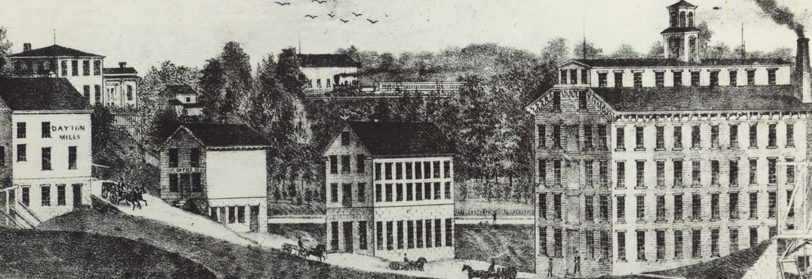The following column is reprinted from volume 3 of the 1953-54 publication, Our School News, produced by the students of the Dayton School.
Holiday Memories
Mrs. Genevieve Hall of Ottawa called at the John Jackson home on Christmas eve.
Mr. and Mrs. Thomas Hiland, Terry, Janelle and Laurel visited Mr. and Mrs. Vernon Hiland and family of Moline.
Mr. and Mrs. Charles Clifford, Candace, Sally and Mrs. Ralph Green spent New Year’s Day with Mr. and Mrs. Eichelberger of LaGrange.
On Christmas Day, the Clifford family called on Mr. Clifford’s mother. Mr. and Mrs. Sears, their children, Mr. and Mrs. Roberts and their two girls also were there.
On Christmas Day Mr. and Mrs. Floyd McMichel, Mrs. Mossbarger and Bobby called at the home of George McMichel of Wedron.
Mr. and Mrs. Cruit and their children, Mr. and Mrs. Lloyd Ray and their three children, Mr. and Mrs. Cecil Barr and child came to spend a day at the home of Oran Mathias in honor of Mrs. Mathias’s birthday.
On New Year’s Day, Mr. and Mrs. Wayne Thompson and their three children came from Florida and spent the day at the Chester Thompson home.
Mr. and Mrs. Bernard Hackler, Bryan and Gary were vacation guests of Mr. and Mrs. Howell of LaGrange.
Holiday visitors at the Mathias home included Mr. and Mrs. Cecil Barr of Decatur, Mr. and Mrs. Lloyd Ray of Bethany, Mr. and Mrs. Wayne Cruit and Mr. and Mrs. Henry Heiland of Findlay, Ilinois.
Mr. and Mrs. Charles Poole, Robert, David, Nancy and Patty spent Christmas Day with Mr. and Mrs. George Poole.
Mrs. Oran Mathias, Jimmy, Linda, and Gary spent Christmas in the home of Mr. and Mrs. Chester Mathias in Shelby County. They also visited Mr. and Mrs. Ray of Bethany.
Mr. and Mrs. Jesse Leonard spent Christmas Day with the Don Leonard Family.
Mr. and Mrs. Jason Hughes spent New Year’s in Pontiac at the Ramsey home.
Dixie Slover spent Christmas in Chicago with her father. She had an enjoyable time shopping, going to the big stores and visiting relatives. Mr. Slover brought her home New Year’s.
Mrs. Kossow’s parents from Peru were New Year’s guests at the Kossow home.
Marty reports a vacation in Florida during the holidays where he went swimming, sight seeing and fishing. To go fishing Marty and his Dad went out in a boat.
The George Pinske family visited relatives in Freedom township during the holidays.
Mr. and Mrs. Joe Frig, Lounetta, Clarence and Mary Jo spent Christmas at the home of their grandmother, Mrs. McConnahay in Ottawa. Lounetta enjoys using her flash bulb camera which she received as a gift.
The traditional gathering at the home of Fred Eichelkraut in Ottawa was attended by the Robert Ohme family, it is held on Christmas eve.
Robert and Charles are busy with the gas model airplanes which they received at Christmas.
Carol Dezso accompanied her parents, Mr. and Mrs. Frank VanDorn, and brother, Jimmie, to South Bend, Indiana, during the holidays where they visited friends and relatives.
Sally Ann Peters enjoyed riding her mule during the holidays. Her grandmother, Mrs. Pearl Peters entertained relatives at Christmas time.
Mr. and Mrs. Leslie Carrier, Jack Traeger of Chicago were holiday visitors at the home of Mr. and Mrs. A. Walleck.
During the holidays, Bob skated to Wedron.
Mr. and Mrs. Harold Fosse entertained the Melvin Holm family on Christmas Day. On December 27, Mr. and Mrs. Melvin Holm and family attended the Fosse family reunion held at the Masonic Temple in Ottawa.
Larry Mettille is the possessor of a new gun and enjoyed hunting during the holidays. The Jess Mettile family visited Mr. and Mrs. L. Halterman of Ottawa on Christmas Day. An interesting specimen, that of a heart, was viewed by Larry Mettile while at this aunt’s home,
Dick Jackson visited friends at Earlville at Christmas time, later during the vacation he entertained these Earlville friends at his home. Dick has a new electric train which he enjoys greatly.
On Christmas eve, a gift exchange was held at the home of Mr. and Mrs. Theodore Wilson. Guests present included Mr. and Mrs. Eugene Davis and son of Maywood and Mr. and Mrs. Lum McKinney.
Kenneth Newtson received a 16 gauge shotgun for Christmas. He skated to Wedron during the vacation period. Guests at the Newtson home for Christmas included Mr. and Mrs. LaVerne Jamieson and daughters, and Fred Newtson.
Larry Polen tried out his new skates during the holidays.
Eddy Peters visited relatives in Marseilles during the holidays. Eddy enjoyed decorating, then later taking the tree down.
Mrs. Eva Charlier, Miss Emma Fraine, Mrs. Mathias and Linda were guests at the home of Mrs. J. Trent during the holidays.




